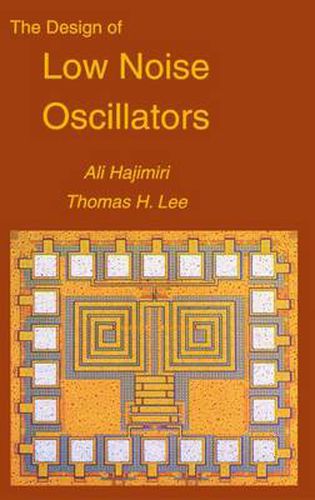Readings Newsletter
Become a Readings Member to make your shopping experience even easier.
Sign in or sign up for free!
You’re not far away from qualifying for FREE standard shipping within Australia
You’ve qualified for FREE standard shipping within Australia
The cart is loading…






This title is printed to order. This book may have been self-published. If so, we cannot guarantee the quality of the content. In the main most books will have gone through the editing process however some may not. We therefore suggest that you be aware of this before ordering this book. If in doubt check either the author or publisher’s details as we are unable to accept any returns unless they are faulty. Please contact us if you have any questions.
The tremendous growth in wireless and mobile communications has placed stringent requirements on channel spacing and, by implication, on the phase noise of oscillators. Compounding the challenge has been a recent drive toward implementations of transceivers in CMOS, whose inferior l/f noise performance has usually been thought to disqualify it from use in all but the lowest-performance oscillators. Low noise oscillators are also highly desired in the digital world. The continued drive toward higher clock frequencies translates into a demand for ever-decreasing jitter. There is a need for a deep understanding of the fundamental mechanisms governing the process by which device, substrate, and supply noise turn into jitter and phase noise. Existing models generally offer only qualitative insights, however, and it has not always been clear why they are not quantitatively correct. This text offers a time-variant phase noise model for low noise oscillators. By discarding the implicit assumption of time-invariance underlying many other approaches, this model is capable of making quantitative predictions of the phase noise and jitter of different types of oscillators. It is able to attribute a definite amount of phase noise to every noise source in the circuit. Because of its time-variant nature, the model also takes into account the effect of cyclostationary noise sources in a natural way. It details the precise mechanism by which low frequency noise, such as l/f noise, upconverts into close-in phase noise. An important understanding is that rise and fall time symmetry controls such upconversion. More importantly, it suggests practical methods for suppressing this upconversion, so that good oscillators can be built in technologies with notoriously poor l/f noise performance (such as CMOS or GaAs MESFET). The book should be of interest to both analog and digital circuit as well as RF circuit designers.
$9.00 standard shipping within Australia
FREE standard shipping within Australia for orders over $100.00
Express & International shipping calculated at checkout
This title is printed to order. This book may have been self-published. If so, we cannot guarantee the quality of the content. In the main most books will have gone through the editing process however some may not. We therefore suggest that you be aware of this before ordering this book. If in doubt check either the author or publisher’s details as we are unable to accept any returns unless they are faulty. Please contact us if you have any questions.
The tremendous growth in wireless and mobile communications has placed stringent requirements on channel spacing and, by implication, on the phase noise of oscillators. Compounding the challenge has been a recent drive toward implementations of transceivers in CMOS, whose inferior l/f noise performance has usually been thought to disqualify it from use in all but the lowest-performance oscillators. Low noise oscillators are also highly desired in the digital world. The continued drive toward higher clock frequencies translates into a demand for ever-decreasing jitter. There is a need for a deep understanding of the fundamental mechanisms governing the process by which device, substrate, and supply noise turn into jitter and phase noise. Existing models generally offer only qualitative insights, however, and it has not always been clear why they are not quantitatively correct. This text offers a time-variant phase noise model for low noise oscillators. By discarding the implicit assumption of time-invariance underlying many other approaches, this model is capable of making quantitative predictions of the phase noise and jitter of different types of oscillators. It is able to attribute a definite amount of phase noise to every noise source in the circuit. Because of its time-variant nature, the model also takes into account the effect of cyclostationary noise sources in a natural way. It details the precise mechanism by which low frequency noise, such as l/f noise, upconverts into close-in phase noise. An important understanding is that rise and fall time symmetry controls such upconversion. More importantly, it suggests practical methods for suppressing this upconversion, so that good oscillators can be built in technologies with notoriously poor l/f noise performance (such as CMOS or GaAs MESFET). The book should be of interest to both analog and digital circuit as well as RF circuit designers.